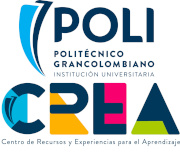Human-computer interaction on educational and artistic scenarios. Kinect as a viable proposal
Interacción humano-computador en escenarios educativos y artísticos. Kinect como propuesta viable
Resumen
The possibilities and tools offered by a computer system are becoming more advanced, thorough and comprehensive. With these advancements, the potential for interaction with modern computer systems have been expanding and taking routes and ways that a few years ago were not considered plausible. Since the initial input-output data outlines, through the use punch cards, switches, light alerts or printing systems, to the development of the keyboard and mouse, interactions using multitouch and natural interactions diagrams, human-computer interaction is a field of constant growth. However, there is a gap in terms of interaction schemes for artistic creation and teaching scenarios. This paper provides a brief overview of the requirements, characteristics and needs of a solution to this gap, and proposes the use of Kinect as a device of human-machine interaction for the scenarios described, taking into account accessibility robustness, ease of use and modification, as well as the wide range of possibilities. Las posibilidades y herramientas que ofrece un sistema computacional son cada vez más avanzadas, amplias y completas. Con el avance, en este sentido, las posibilidades de interacción con los sistemas computacionales modernos han venido ampliándose y tomando rutas y formas que hace apenas unos años no se consideraban plausibles. Desde los esquemas iniciales de entrada-salida de datos, pasando por el uso tarjetas perforadas o interruptores y alertas luminosas o sistemas de impresión, hasta el desarrollo del teclado y el mouse, y las interacciones que utilizan esquemas multitoque e interacciones naturales; la interacción humanocomputador es un campo de crecimiento constante. Existe sin embargo un vacío en términos de esquemas de interacción para escenarios de creación artística y de enseñanza. En este trabajo se presenta una breve reseña de los requerimientos, características y necesidades de una solución a este vacío, y se propone la utilización de Kinect como dispositivo de interacción humano-máquina para los escenarios descritos, teniendo en cuenta su accesibilidad, robustez, facilidad de uso y modificación, así como la amplísima gama de posibilidades que ofrece.
Recurso relacionado
https://journal.poligran.edu.co/index.php/elementos/article/view/416Colecciones
- Elementos [66]
Estadísticas Google Analytics

